UPSC Daily Current Affairs: 22nd July 2025 | Current Affairs & Hindu Analysis: Daily, Weekly & Monthly PDF Download
GS2/Polity
Right to Vote - Understanding Its Legal Status and Constitutional Evolution in India
Why in News?
The Supreme Court is currently reviewing cases related to the Special Intensive Revision (SIR) of electoral rolls in Bihar, raising critical legal questions about the right to vote in India.
Key Takeaways
- The right to vote is essential for democratic function, but its classification has been debated as either constitutional or statutory.
- Different categories of rights exist in the Indian legal framework, impacting the interpretation and enforcement of voting rights.
Additional Details
- Classification of Rights:
- Natural Rights: Inherent and inalienable rights, such as the right to life and liberty, which are interpreted through fundamental rights.
- Fundamental Rights: Enshrined in Part III of the Constitution, including freedom of speech and equality, enforceable under Article 32.
- Constitutional Rights: Located outside Part III, like the right to property, enforceable through Article 226.
- Statutory Rights: Derived from laws passed by Parliament or State legislatures, such as rights under MGNREGA.
- Constitutional Provisions: Article 326 guarantees universal adult franchise, allowing citizens aged 18 and above to vote, contingent on legal qualifications.
- Judicial Interpretations: Landmark judgments have fluctuated between viewing the right to vote as statutory or constitutional.
The ongoing debate regarding the legal status of the right to vote has significant implications for electoral integrity and citizen rights, necessitating clarity and potential reconsideration in light of emerging democratic principles.
GS2/Governance
Dharmasthala Manjunatheshwara Temple
Why in News?
The Sri Dharmasthala Manjunatheshwara Temple in Dharmasthala has recently come under scrutiny following the formation of a Special Investigation Team (SIT) by the Karnataka government. This investigation addresses allegations concerning the mass secret burial of unidentified bodies in this significant pilgrimage center.
Key Takeaways
- The temple is dedicated to Lord Shiva, revered here as Lord Manjunatha.
- It has a rich history, dating back approximately 800 years.
- The administration of the temple is managed by a hereditary Jain family known as the Heggades.
Additional Details
- Architecture: The temple showcases Kerala temple architecture, which is distinct from other South Indian architectural styles. This uniqueness is evident in its structure and design.
- Construction Materials: The temple employs various materials including wood, clay, stone, metals, and laterite. The base structure is primarily composed of granite and laterite.
- The temple features a square plan with a pyramidal sloping roof, complemented by a wooden roof adorned with gold-plated copper plates to safeguard the framework.
- Wooden pillars prominently support the temple's front pavilion.
This temple not only serves as a spiritual hub but also reflects the rich cultural heritage and architectural grandeur of the region. The ongoing investigation highlights the temple's significance in contemporary discussions surrounding ethical and societal issues.
GS2/Governance
National Sports Policy 2025 - A Paradigm Shift towards Science, Support, and Sustained Excellence
Why in News?
The National Sports Policy 2025 represents a significant transformation in India's strategy for athlete development, emphasizing the integration of sports science, medicine, and technology. This approach is essential for achieving sustained elite performance on the global sports stage.
Key Takeaways
- The policy highlights the importance of supporting athlete performance through comprehensive systems rather than merely expecting success.
- It integrates various disciplines including science, technology, and medicine as foundational elements of sports development.
Additional Details
- Sports Science and Medicine Integration:
- Focus on injury surveillance and early intervention to enhance athlete longevity.
- Utilization of biomechanics and performance analytics for refining training and techniques.
- Emphasis on nutrition and recovery science to secure marginal gains that can influence podium finishes.
- Incorporation of mental health and cognitive conditioning to mitigate psychological pressure during competitions.
- Infrastructure and Institutional Development:
- Upgrading of the Sports Authority of India (SAI) regional centres and National Centres of Excellence, in collaboration with the National Centre for Sports Science & Research.
- Examples include the Bengaluru Centre, which serves as an advanced sports science hub under the Target Olympic Podium Scheme (TOPS), and the Indira Gandhi Stadium in Delhi, which features a new Return to Sports division.
- Medical Team Support:
- For the first time, a dedicated 10-member Indian medical team has been formed to support athletes during the Olympic Games in Paris.
- Technology - Backbone of the New Sports Ecosystem:
- Implementation of AI-driven platforms and real-time dashboards for tracking athlete performance and recovery.
- Predictive tools to assess injury risks and facilitate timely interventions.
- Enhancing transparency and efficiency in sports governance through digital tools.
- Innovation and Research Ecosystem:
- Establishment of a Sports Innovation Task Force and provision of research grants to develop India-specific technologies.
- Focus on creating a self-reliant pipeline for athlete development through interdisciplinary research.
The National Sports Policy 2025 marks a critical evolution in India's sporting philosophy, transitioning from a focus on passion to precision-driven performance through systematic planning and preventive care. It serves as a pivotal case study in policy innovation, evidence-based governance, and the integration of sports with science and technology.
GS3/Economy
Bima Sakhi Yojana
Why in News?
The Life Insurance Corporation of India (LIC) has recently signed a Memorandum of Understanding (MoU) with the Department of Rural Development under the Union Ministry of Rural Development. This agreement aims to enhance the outreach of the Bima Sakhi Yojana in rural regions, focusing on empowering women through a structured training and support system.
Key Takeaways
- The Bima Sakhi Yojana is an initiative by LIC aimed at promoting financial literacy among women.
- Women aged between 18 and 70, who have completed at least Class X, are eligible to participate.
- Participants receive specialized training and a stipend for the initial three years to support their development as LIC agents.
- The programme aims to appoint two lakh Bima Sakhi within three years.
Additional Details
- Eligibility Criteria: Women must be aged between 18 and 70 and have passed the 10th grade. Preference is given to those residing in rural areas.
- Stipend Structure: Participants will receive a monthly stipend of ₹7,000 in the first year, ₹6,000 in the second year, and ₹5,000 in the third year.
- Commission: Bima Sakhis will earn a commission of ₹48,000 (excluding bonuses) in their first year after training.
- Women related to existing LIC agents or employees, including spouses, children, and siblings, are ineligible to apply.
- Retired LIC employees and existing LIC agents cannot participate in the scheme.
The Bima Sakhi Yojana represents a significant step toward enhancing women's empowerment in rural areas by providing them with the tools and resources needed to become financially independent and literate.
GS3/Science and Technology
AdFalciVax Vaccine
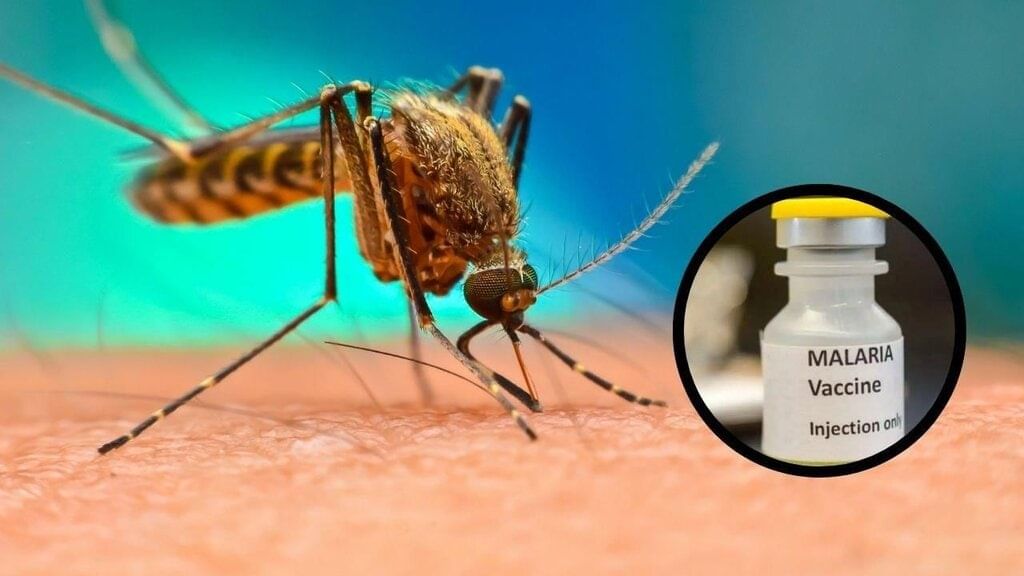 Why in News?
Why in News?
The Indian Council of Medical Research (ICMR) is in the process of developing a new malaria vaccine candidate named AdFalciVax, aimed specifically at combating the Plasmodium falciparum parasite.
Key Takeaways
- AdFalciVax is a recombinant vaccine, utilizing parts of genes to trigger an immune response.
- It is developed in collaboration with various research institutes and utilizes a safe, food-grade bacterium for production.
- The vaccine targets multiple stages of the malaria parasite lifecycle.
- It offers advantages over existing malaria vaccines in terms of cost-effectiveness and storage requirements.
Additional Details
- Recombinant Vaccine: This type of vaccine uses genetic engineering to insert specific parts of the malaria parasite's genes into a host cell, prompting the expression of target proteins that elicit an immune response.
- Collaboration: The development of AdFalciVax involves the Regional Medical Research Centre in Bhubaneswar (RMRCBB), the National Institute of Malaria Research (NIMR), and the Department of Biotechnology's National Institute of Immunology (DBT-NII).
- Production: The vaccine is produced using Lactococcus lactis, a safe, food-grade bacterium, which aids in the vaccine's safety profile.
- Dual-Stage Protection: Unlike existing vaccines that target only one stage of the parasite, AdFalciVax incorporates antigenic components that focus on both the pre-erythrocytic and sexual stages, aiming to enhance individual protection and reduce transmission through mosquitoes.
- Storage Benefits: The formulation of AdFalciVax remains potent for over nine months at room temperature, thus minimizing the challenges associated with cold chain logistics in vaccine distribution, especially in remote areas.
In conclusion, the AdFalciVax vaccine represents a promising advancement in malaria prevention, offering unique benefits and a dual-target approach to combat one of the world's most significant health challenges.
GS1/Indian Society
Hatti Tribe and Polyandry Tradition
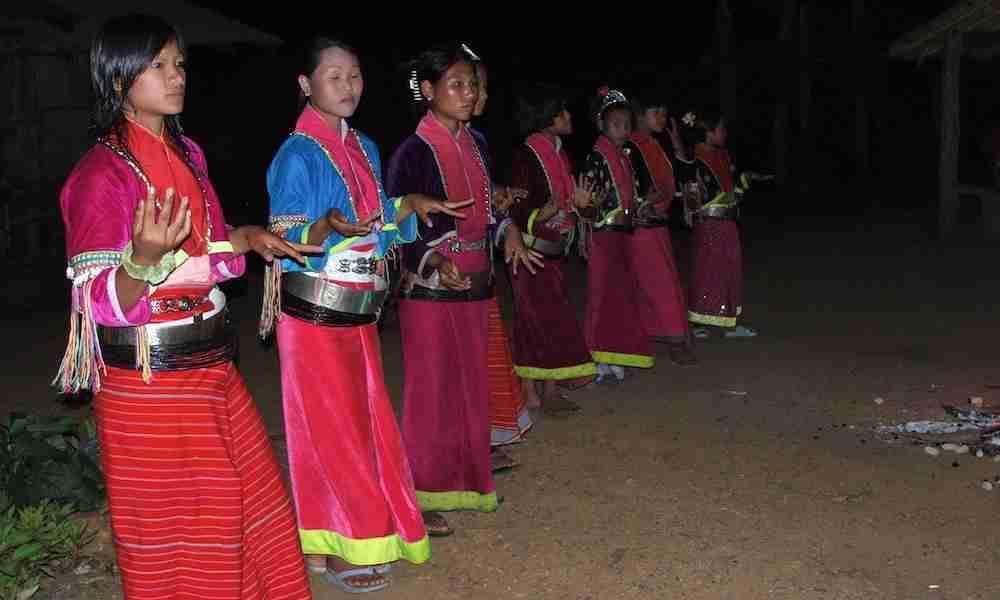 Why in News?
Why in News?
Recently, two brothers from the Hatti tribe in Himachal Pradesh made headlines by marrying the same woman in a marriage ceremony that adhered to their traditional practice of polyandry. This event highlights the cultural significance and social dynamics within the Hatti community.
Key Takeaways
- The Hatti tribe is known for its distinctive cultural practices, including polyandry.
- The community is primarily located at the Himachal-Uttarakhand border, particularly in the basin of the Giri and Tons rivers.
- The Indian government recently granted Scheduled Tribe (ST) status to the Hatti community in Himachal Pradesh.
Additional Details
- About the Hatti Tribe: The Hatties are a close-knit community named after their traditional occupation of selling home-grown crops, vegetables, meat, and wool at local markets known as haats.
- Geographical Distribution: The Hatti people reside in the region bordering Himachal Pradesh and Uttarakhand, with two primary clans located in the Trans-Giri area of Sirmaur district and Jaunsar Bawar in Uttarakhand.
- Economic Activities: The Hatti population relies heavily on agriculture for their livelihood, growing cash crops that are well-suited to their climate.
- Population Statistics: As per the 2011 census, the Hatti community comprised approximately 250,000 individuals, with current estimates around 300,000.
- Tribal Status: The Jaunsar-Bawar region received tribal status in 1967, while the Hatti community was recognized as a Scheduled Tribe in 2023.
This recent marriage event not only showcases the customs of the Hatti tribe but also emphasizes the community's resilience and adaptability in preserving their traditions amidst modern influences.
GS2/Polity
Vice President Jagdeep Dhankhar Resigns
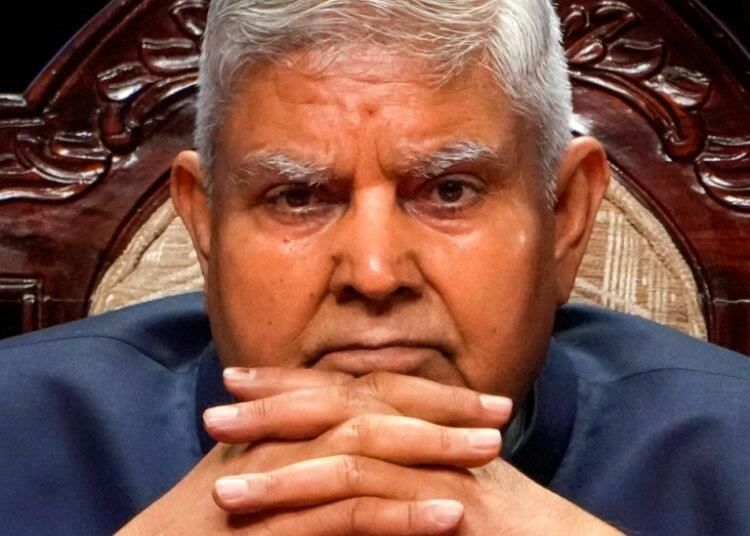 Why in News?
Why in News?
In an unexpected development, Vice President Jagdeep Dhankhar resigned from his post on July 21, coinciding with the opening day of the Monsoon session of Parliament. Citing health concerns and following medical advice, Dhankhar submitted his resignation to President Droupadi Murmu, invoking Article 67(a) of the Constitution. He is now the third Vice President in India’s history to resign mid-term, following V. V. Giri and R. Venkataraman, who also resigned to contest presidential elections.
Key Takeaways
- Dhankhar's resignation comes two years before the end of his term, which was due to conclude in 2027.
- The resignation process is straightforward, requiring only a written notice to the President.
- An election must be held to fill the vacancy left by the Vice President's resignation.
Additional Details
- Resignation Procedure: According to Article 67 of the Constitution, a Vice President can resign at any time by submitting a written resignation to the President. Once accepted, the resignation takes immediate effect without needing any further approval.
- Succession: The Constitution does not provide for an acting Vice-President. In the interim, the Deputy Chairman of the Rajya Sabha, currently Harivansh Narayan Singh, will preside over the House.
- Election Timeline: Unlike the President's post, there is no fixed deadline for filling a Vice-Presidential vacancy, but the election must be conducted "as soon as possible." The Election Commission is responsible for scheduling.
- Eligibility Criteria: To be eligible for the role of Vice-President, a candidate must be an Indian citizen, at least 35 years old, and qualified to be elected as a member of the Rajya Sabha.
- Election Process: The Vice-President is elected by an electoral college consisting of members from both the Lok Sabha and Rajya Sabha. Voting occurs through a secret ballot using the proportional representation system.
- Tenure of New Vice President: A newly elected Vice President will serve a full five-year term from the date of assuming office, irrespective of the predecessor's remaining term.
The Vice President plays a crucial role as the second-highest constitutional authority in India and is the ex-officio Chairperson of the Rajya Sabha. In the event of a President's absence, the Vice President assumes temporary presidential duties until a new President is elected.
GS1/History & Culture
Mangal Pandey (1827-1857)
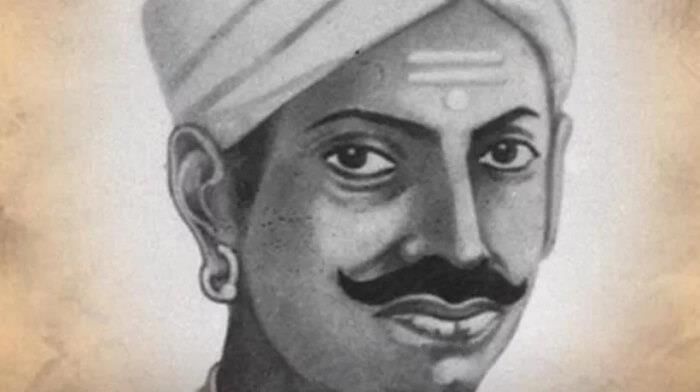 Why in News?
Why in News?
The Prime Minister recently paid tribute to the renowned freedom fighter Mangal Pandey on the occasion of his birth anniversary, acknowledging his significant role in India's struggle for independence.
Key Takeaways
- Mangal Pandey was born on 19 July 1827 in Nagwa village, Ballia district, Uttar Pradesh.
- He joined the British East India Company’s army in 1849 as a sepoy in the 34th Bengal Native Infantry.
- His opposition to the Enfield rifle cartridges, which were greased with cow and pig fat, sparked a revolt.
- On 29 March 1857, he attacked British officers, inciting other sepoys to join the rebellion.
- He was executed by hanging on 8 April 1857, becoming a martyr for the cause of independence.
- Mangal Pandey is remembered as the "Hero of the First War of Indian Independence" and a symbol of resistance.
Additional Details
- 1857 War of Independence: This conflict, also known as the Great Rebellion of 1857, marked a significant uprising against British rule in India.
- Sepoy Composition: Over 87% of the British Indian Army comprised Indians, who faced severe discrimination and inequities.
- Root Causes of the Revolt:
- Military Discontent: Soldiers faced unequal pay, limited promotion opportunities, and denied allowances.
- Religious Insensitivity: The introduction of cartridges greased with animal fat insulted both Hindu and Muslim soldiers.
- Economic Hardship: Heavy taxation, the decline of traditional crafts, and rising unemployment fueled dissatisfaction.
- Political Grievances: The annexation of Indian states and oppressive laws contributed to widespread unrest.
- The outbreak of the rebellion began with Mangal Pandey’s defiance on 29 March 1857.
- On 10 May 1857, sepoys at Meerut revolted after refusing to use the cartridges and were subsequently imprisoned.
- Rebels marched to Delhi and declared Bahadur Shah II as Emperor, marking a pivotal moment in the uprising.
- The revolt spread across various regions, including Kanpur, Lucknow, Jhansi, Bihar, and Bareilly, drawing mass participation from sepoys, peasants, landlords, and regional rulers.
The rebellion was brutally suppressed by 1859, with Delhi recaptured in September 1857. The British East India Company was dissolved, and India came under direct British Crown rule, marking the beginning of the British Raj. Following the revolt, Indian representation in the army was significantly reduced, and repressive policies intensified, contributing to a legacy of racial discrimination and harsh governance in the years that followed.
UPSC 2006: Question
Who was the Governor-General of India during the Sepoy Mutiny?
- (a) Lord Canning*
- (b) Lord Dalhousie
- (c) Lord Hardinge
- (d) Lord Lytton
GS3/Environment
Guryul Ravine Fossil Site
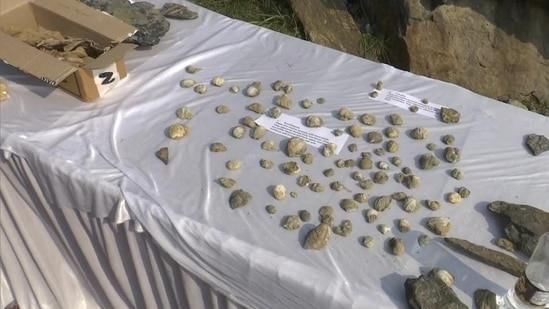 Why in News?
Why in News?
The Geological Survey of India (GSI) has issued a serious warning to the Jammu and Kashmir administration regarding the Guryul Ravine fossil site in Khonmoh, near Srinagar. This site is facing significant threats due to human activities, which jeopardize its unique scientific value.
Key Takeaways
- The Guryul Ravine fossil site is located in the Vihi district of Kashmir.
- It contains fossils dating back 260 million years, providing evidence of the Permian–Triassic extinction event.
- The site is near Dachigam National Park and is part of the Khonmoh Conservation Reserve.
- Human activities such as quarrying and construction are damaging the site.
Additional Details
- Permian–Triassic Extinction Event: This event, also known as the End-Permian Extinction or the 'Great Dying', occurred approximately 251.9 million years ago and marks a major boundary between the Permian and Triassic geological periods. It is characterized by a significant loss of biodiversity across vast regions.
- The Guryul Ravine site is believed to preserve evidence of the world's first recorded tsunami event, with its imprint still visible in the exposed rock layers.
The Guryul Ravine fossil site is of immense scientific importance, and its preservation is crucial for understanding Earth's geological history. Immediate action is necessary to mitigate the threats posed by ongoing human interventions.
GS2/International Relations
At FTA’s Heart, The Promise of Global Capacity Centres
Why in News?
The Free Trade Agreement (FTA) between the United Kingdom and India is set to become a pivotal development in international trade, particularly for its economic importance and potential to transform the services sector.
Key Takeaways
- The rise of Global Capability Centres (GCCs) represents a strategic opportunity for collaboration between India and the U.K.
- India serves as a global hub for GCCs, housing over 1,500 centres that employ approximately two million professionals.
- The FTA can help harmonize trade policies and enhance cross-border collaboration.
Additional Details
- Global Capability Centres (GCCs): GCCs in India have transitioned from cost-effective back offices to innovation hubs for multinational corporations, providing services in various fields including research and development, analytics, and cybersecurity.
- The U.K. seeks to tap into India's growing digital economy and talent pool, using the FTA to enhance its global services and innovation footprint post-Brexit.
- Policy and Regulation: The FTA aims to address challenges such as double taxation and misaligned digital governance standards that hinder GCC operations. A well-structured agreement can enhance intellectual property protection and facilitate cross-border digital trade.
- India's proactive initiatives, despite the absence of a formal national GCC policy, have created a conducive ecosystem for GCCs, supported by collaborations between the government and industry stakeholders.
- The ongoing diplomatic engagements between the U.K. and India signal a commitment to strengthening bilateral trade ties, with both nations aiming to establish a knowledge corridor focused on services, digital trade, and talent mobility.
In conclusion, the forthcoming U.K.-India Free Trade Agreement presents a historic chance to redefine bilateral trade by emphasizing services, innovation, and human capital, which are essential for the success of Global Capability Centres. This partnership has the potential to foster foreign investment, develop talent, and drive digital transformation in both countries, ultimately creating a resilient knowledge-driven corridor for international cooperation.
|
38 videos|5246 docs|1106 tests
|
FAQs on UPSC Daily Current Affairs: 22nd July 2025 - Current Affairs & Hindu Analysis: Daily, Weekly & Monthly
| 1. What is the significance of the Right to Vote in India and how has its legal status evolved over time? |  |
| 2. How does the Dharmasthala Manjunatheshwara Temple contribute to social justice in India? |  |
| 3. What are the key features of the National Sports Policy 2025 in India? |  |
| 4. What is the Bima Sakhi Yojana and how does it support women in India? |  |
| 5. What is the historical significance of Mangal Pandey in India's struggle for independence? |  |





















